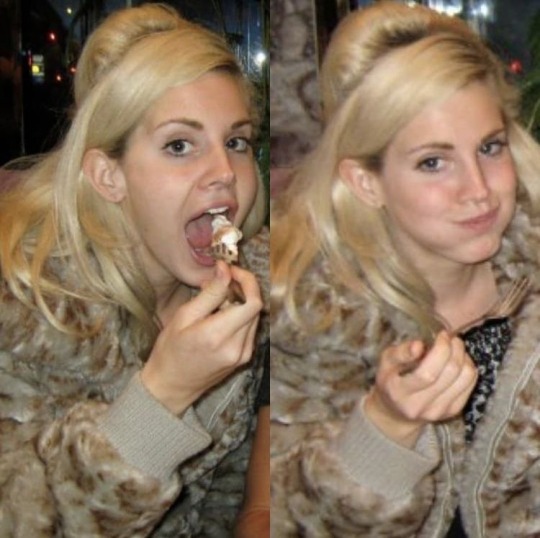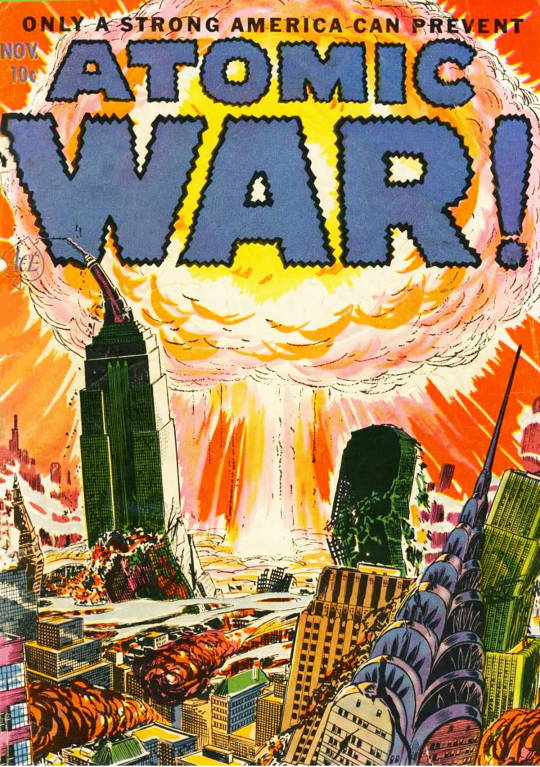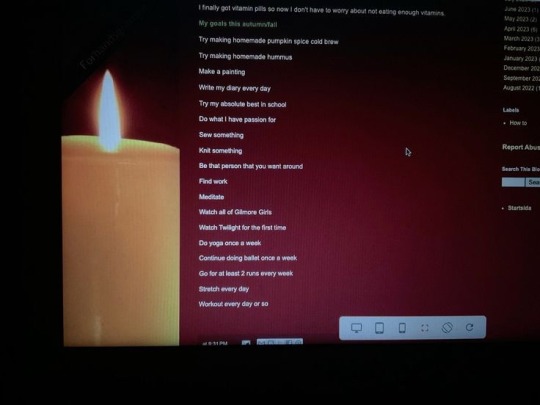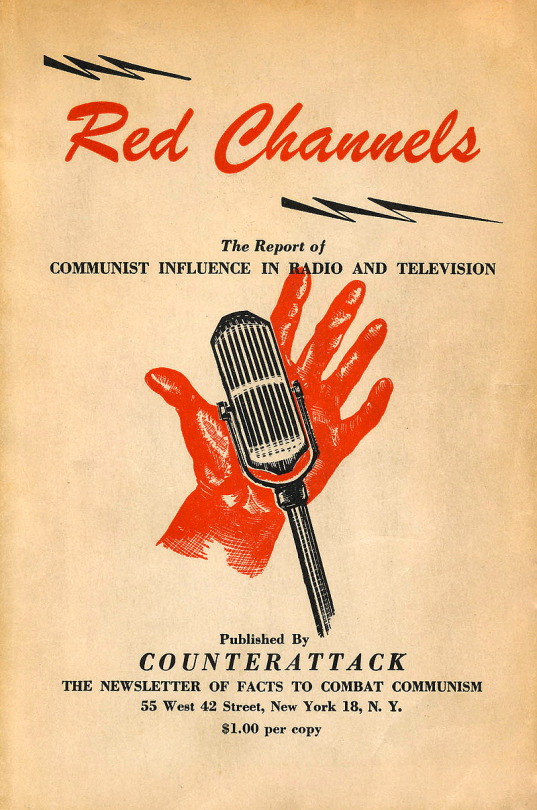#RedScare
Explore tagged Tumblr posts
Text

#girlblogger#girlblogging#girl interrupted syndrome#girlboss#gaslight gatekeep girlboss#lana del rey#female manipulator#girl interrupted#alana champion#lily rose depp#lana del ray aka lizzy grant#lizzy grant#coquette aesthetic#coquette#dollete#redscare#palo alto#twin peaks#paradise#philosophy#sylvia plath#chemtrails over the country club#my year of rest and relaxation#ottessa moshfegh#white dress#st tropez#the virgin suicides#sofia coppola#pretty#did you know that there’s a tunnel under ocean blvd
452 notes
·
View notes
Text
"i'm pretty when i cry"
i don't think you've cried hard enough
#relax- im kidding#lana del rey#ultraviolence#pretty when you cry#girlblogging#this is what makes us girls#dollette#cinnamon girl#coquette#female hysteria#female rage#lizzy grant#hell is a teenage girl#girlhood#black swan#redscare
24 notes
·
View notes
Text
From Wanderlust to Wisdom: FARTHER Together Is Growing—Thanks to You!

We’re humbled and thrilled to share that FARTHER Together is now welcoming hundreds of visitors every single day. What began as a simple chronicle of our adventures has become something more: a space where travel meets transformation, and where stories stretch beyond borders—both literal and personal.
We're not here to sell you anything. We're not pushing products, pitching gear, or promoting the latest trend.
What we are doing is sharing real stories about real experiences—from the road, from the heart, and from life itself. Our travels have taken us across continents, but the deeper journey has always been inward: toward self-discovery, personal growth, and a greater understanding of what it means to live fully and authentically.
We believe in the power of storytelling to uplift, inspire, and remind us all that, even in uncertain times, positivity still matters. Connection still matters. Perspective still matters.
So thank you—for showing up, for reading, and for journeying with us. Whether you’re here for travel inspiration or soul nourishment (or both), we’re so glad you’re walking this path FARTHER Together.
With gratitude, Debbie & Stratton FARTHER Together
#FARTHERTogether #TravelInspiration #SoulfulJourneys #LiveFully #PersonalGrowth #SelfActualization #PositiveVibes #RealStories #TravelBeyondBorders
Source: From Wanderlust to Wisdom: FARTHER Together Is Growing—Thanks to You!
0 notes
Text


all the things she said all the things she said
the funny thing about listening to redscare for me is that in theory I should relate to dasha more. being that we share the same home town and almost share a birthday.
but nah Anna I think is definitely more so my typpa bitch... like obviously she lives in my area lol but also she's lowk a basketball broad too she's just usually the one w the references that make me look around like girl you picking my brain like what's up? nah like obvi I don't agree with everything i can like very much think for myself but whatever I been getting in trouble for liking "controversial" ppl when people who are just real are a lil controversial and that's not saying morally depraved.. just that not everyone may agree with them or whatever whatever plus I've seen her around like twice sooo I don't see dasha in these skreets lmaoo
#redscare#girlblogger#girl interrupted syndrome#tumblrina#redscare girls#waif#real#upl#aesthetic#mother#fr#girl blogging#anna khachiyan
14 notes
·
View notes
Text
Half the passion of being in a romantic relationship is being possessive over each other. Jealousy is a good emotion. Anna Khachiyan Red Scare, Yemeni Such Cases
15 notes
·
View notes
Text
A former Ontario cabinet minister is suing the Canadian Security Intelligence Service and unidentified employees who he alleges leaked classified information with the intent of harming his reputation.
Michael Chan alleges the anonymous employees' actions were influenced by "a stereotypical type-casting of immigrants born in China as being somehow untrustworthy."
Chan, a former cabinet minister in the former Ontario Liberal government and now a deputy mayor in Markham, Ont., is also suing the Crown, the attorney general of Canada, the CSIS director, and two journalists who have written stories on Chan based on leaked classified information.
Chan says the stories inaccurately implicated him in allegations of election interference and he is seeking a total of $10 million in damages. [...]
Continue Reading.
Tagging: @politicsofcanada
23 notes
·
View notes
Text


🎃 𝗧𝗵𝗲 𝘀𝘁𝗼𝗿𝘆 𝗼𝗳 𝗮 𝘁𝗿𝘂𝗲 𝗽𝗮𝘁𝗿𝗶𝗼𝘁𝗶𝗰 𝗔𝗺𝗲𝗿𝗶𝗰𝗮𝗻 𝘀𝗲𝗿𝗶𝗮𝗹 𝗸𝗶𝗹𝗹𝗲𝗿 🎃
1957, Las Vegas, Nevada. In the heart of the Atomic Age, James was your run-of-the-mill dad, living in cookie-cutter suburbia. Fear of the Red menace and mushroom clouds drove folks like him to invest in underground shelters. But then one day, James and his entire family vanished without a trace. Whispers of them escaping to an untouched island amidst Cold War tension swept through the town.
1998, Las Vegas, Nevada. The masked killer was an enigma, striking with the precision of a seasoned marksman. Entire families, huddled together for dinner, became his prey. He showed no mercy, claiming mothers, fathers, children, and young adults without discrimination. In a nation with its fair share of serial killers, this story stood out. He shattered the sanctity of home, striking from a distance. Fear gripped the hearts of every American.
1999, Las Vegas, Nevada. A year passed before the law finally caught up with the killer. He was a man named John, but his tale was pure madness. Back in the 1950s, his family had sealed themselves in a fallout shelter, but disease had claimed them, leaving him alone for decades. Emerging into a changed world, he found people who seemed foreign—dressed oddly, speaking differently. To him, they were the enemy, invaders who'd replaced true Americans. Convinced he was the last patriot standing, he believed it was his duty to cleanse his homeland.
Armed with a hunting rifle and deadly precision, he crept into the shadows, emerging only under the cover of night. When reporters inquired about his motives, he sneered, "Because I'm a true American, you darn commies, and one day this land will be free once more!"
💀☠️💀☠️💀
#HELMORT#Halloween#LasVegas#Killer#Nevada#Hallween#AtomicAge#ColdWar#RedScare#FalloutShelter#FamilyVanished#MysteriousIsland#MaskedKiller#SerialKiller#ShatteredSanctity#Madness#DecadesAlone#ChangedWorld#ForeignWorld#LastPatriot#CleanseHomeland#HuntingRifle#DeadlyPrecision#CoverOfNight#TrueAmerican#DarnCommies#FreeLand#SocialMedia#TrendingTopics
5 notes
·
View notes
Text

Please send me your girlblog! I love reading about delusional teen girls life
If you would like to discover mine
don’t resist the urge I love all of you silly girlbloggers Be my friend I am blonde and alone but I’m 15 so no crazy crazy people okay



xoxo
Amanda
#girlblog#girlblogger#girlblogging#lana del rey#girlblogger2008#blog#lizzie grant#alana champion#cassie skins#natalie portman#black swan#balletcore#girlhood#girl interrupted#femcel#redscare#girl post#girl room#blogger
3 notes
·
View notes
Text
Must be Russian the way I been living off this bread
0 notes
Text

You see how Stockmic was fighting Palm-Commies back in the day, yet never gets the credit it deserves. Plus $1 a copy is a lot of money in 1950! Still waiting for those Red Scare Royalties.
0 notes
Text
Been thinking a lot about how much America has always hated communists more than fascists. It seems a lot of people were confused about WW2, because we were all red scare soon after. its like they forgot that Hitler wanted the communists conquered AND THATS WHY we didn't intervene for 5 YEARS of war! We HATE communism for literally no reason other than the term being linked to a specific country's failed attempt that became fascism. It's an ideology, and yet we used the hatred for communism to degrade the words of the most American Patriots!

#implode#america#class consciousness#wallace#redscare#untold history#america is a hellscape#fuck trump#class war#deny defend depose#eat the fucking rich#eat the rich#ceo down#antifascismo#comunista#socialismo#anarcho communism
6K notes
·
View notes
Text
"Memorie e Contestazione: Il Caso di #Sacco e #Vanzetti"
Contesto Storico: Gli anni ’20 negli Stati Uniti furono un periodo di significative trasformazioni politiche e sociali. Segnati dalla fine della Prima Guerra Mondiale, questi anni videro un’accelerazione dell’industrializzazione e l’ascesa di una nuova cultura urbana. Tuttavia, fu anche un periodo di profonde tensioni sociali, caratterizzato da un intenso nazionalismo e da un crescente…

View On WordPress
#DirittiDeiMigranti#EreditàCulturale#GiustiziaStorica#IngiustiziaLegale#LottaPerLaGiustizia#RedScare#StoriaAmericana#StoriaDegliAnni20
0 notes
Text
Analysis of: "Oppenheimer" movie screenplay script
Here is a summary of the key points discussed:
The overarching theme is the tension between scientific progress and moral responsibility.
It follows a classic biographical narrative structure tracing Oppenheimer's life events and intellectual journey.
A wide range of emotions are portrayed to add psychological depth to characters and themes.
It depicts the immense ethical dilemmas faced around developing and using atomic weapons.
Oppenheimer grapples with reconciling his scientific achievements and curiosity with its human costs.
The Manhattan Project and challenges of building the first atomic bomb are realistically dramatized.
Oppenheimer evolves from gifted physicist to leader plagued by his bomb's implications.
General Groves clashes with scientists but recognizes Oppenheimer's brilliance and necessity.
Key locations provide historical context and backdrops for important events.
The plot follows classic three-act structure from setup to rising conflict to resolution.
Relationships between characters propel the narrative and exploration of themes.
Metaphors and allegory add thematic resonance without being overtly symbolic.
An array of personal, ideological and ethical conflicts are effectively portrayed.
Here is a summary of the screenplay in bullet points:
The story follows J. Robert Oppenheimer, the scientific director of the Manhattan Project. It shows key moments from his early life and work leading up to WWII.
Oppenheimer works to build the first atomic bomb at a secret lab in Los Alamos, New Mexico. He oversees the recruitment of scientists and works closely with General Leslie Groves to develop the bomb.
Oppenheimer struggles with the moral issues of building such a destructive weapon but feels they must be developed before the Nazis. The first successful nuclear test, code named Trinity, is conducted in July 1945.
After the bombings of Hiroshima and Nagasaki that ended WWII, Oppenheimer becomes famous and influential but also faces criticism for his left-wing political views during the McCarthy era.
Tensions grow between Oppenheimer and others like Edward Teller who want to develop more advanced nuclear weapons like the hydrogen bomb. Oppenheimer questions the arms race.
In 1954, Oppenheimer's security clearance is revoked at a controversial hearing led by atomic commission Chairman Lewis Strauss. Oppenheimer finds himself caught up in wider Cold War politics.
The story shows key moments from Oppenheimer's life and work that established him as the scientific director at Los Alamos but also made him vulnerable to accusations during the McCarthy period. It follows his role in developing the bomb and later debates about nuclear policy.
Based on the content and style, this document appears to be a feature film screenplay.
Some indicators that point to it being a screenplay genre include:
It tells a story with defined characters, plot points, settings and dialogue intended for visual/audio adaptation.
Scenes are written out with descriptions of actions, locations, character entrances/exits, camera shots and transitions.
Standard screenplay formatting is used with scene headings, character names centered, dialogue indented, parenthetical directions.
It follows the story of real historical figures like Oppenheimer which suggest it may be intended as a biographical drama.
The scope and scale of story elements involving large projects, world events, international travel indicate a budget suited for film rather than television.
No commercial break indicators or transitions are present ruling it out from being a TV pilot or episode.
So in summary, all signs point to this being a feature length cinematic screenplay intended for film production rather than television, theatre or prose fiction genres. The level of cinematic detail and scope of story elements support classifying it as a feature film screenplay.
Here is a summary of the key events surrounding the building of the first atomic bomb as depicted in the document:
Oppenheimer is chosen to lead the secret Manhattan Project to develop an atomic bomb before Nazi Germany.
He oversees the establishment of the secret laboratory city at Los Alamos, New Mexico assembling the world's top scientists.
Early research focuses on both uranium-235 and plutonium fission but plutonium emerges as a more viable option.
Scientists experiment with different bomb designs like the "gun" method and implosion before settling on implosion.
Major facilities are established across the U.S. to produce enriched uranium and plutonium at enormous scale and cost.
Under relentless deadline pressure, theoretical and experimental challenges are solved through collaboration at Los Alamos.
Successfully tested bomb designs include the uranium "Little Boy" and plutonium "Fat Man" used against Hiroshima and Nagasaki.
After three years and $2 billion, the project culminates in the world's first nuclear explosions during the Trinity test.
Oppenheimer and the scientists witness the dawning of the atomic age with both awe and grave foreboding for mankind.
Here are the major locations mentioned in the document:
Los Alamos, New Mexico - Secret laboratory town built in 1943 to house scientists working on the Manhattan Project, deep in remote mountains.
Trinity site, New Mexico - Remote location of first nuclear bomb test code named Trinity on July 16, 1945.
Hiroshima and Nagasaki, Japan - Cities that suffered the first atomic bombings on August 6 and 9, 1945 respectively, causing mass destruction.
Washington D.C. - Where Oppenheimer testifies at congressional hearings and meets with politicians as scientific head of the Manhattan Project.
Princeton, New Jersey - Where Oppenheimer established a pioneering physics research institute prior to leading Los Alamos.
Berkeley, California - Home of the University of California where Oppenheimer taught and established himself as a brilliant theoretical physicist early in his career.
Raritan Arsenal, New Jersey - Secret facility where components for the Fat Man bomb were tested before use on Nagasaki.
Europe - Continent where Oppenheimer studied as a young man under luminaries like Bohr before returning to the U.S. for graduate work.
These locations provide historical context and backdrops for important events and developments in Oppenheimer's scientific career and leadership of the Manhattan Project.
Here are the main stakeholders mentioned in the document and an evaluation of each:
J. Robert Oppenheimer - Protagonist and scientific director of the Manhattan Project. Faced moral dilemmas and postwar scrutiny. Central figure.
General Leslie Groves - Military director of the Manhattan Project. Oversaw project and initially supported Oppenheimer but grew more adversarial. Major player.
Kitty Oppenheimer - Oppenheimer's wife who supported his work but struggled personally with his commitments and actions. Primary character.
Edward Teller - Brilliant physicist who advocated early for hydrogen bomb but clashed with Oppenheimer. Significant supporting character.
Niels Bohr - Legendary mentor who aided Oppenheimer and advocated for international control post-war. Supporting character.
Klaus Fuchs - Theoretical physicist who spied for Soviets at Los Alamos, unknowingly to Oppenheimer. Revealed later.
Lewis Strauss - AEC chairman who led postwar charges against Oppenheimer. Antagonist driving much of plot.
Scientists at Los Alamos - Those who worked under Oppenheimer's direction on the Manhattan Project. Collective protagonist group.
All listed are individuals whose actions significantly impacted or were impacted by Oppenheimer and the plot's central themes and conflicts. Each stakeholder is thoroughly integrated into driving forward the narrative.
Here is an evaluation of some of the key relationships portrayed in the document:
Oppenheimer and Groves - Develops from distrust to grudging respect, but tensions remain as military/scientific goals clash.
Oppenheimer and Kitty - His marriage is strained by commitment to work, as she struggles to understand his turmoil over the bomb's impacts.
Oppenheimer and Bohr - A mentor/protégé bond as the elder scientist advises Oppenheimer through personal and philosophical issues.
Oppenheimer and Teller - Collegial at first but disagreements over the superbomb test their once-collaborative relationship.
Oppenheimer and Strauss - Mutual antagonism develops as Strauss spearheads postwar suspicion of Oppenheimer's politics.
Oppenheimer and Jean Tatlock - A romantic relationship that deeply affects Oppenheimer and influenced his existentialism.
Oppenheimer and Los Alamos scientists - He functions as a charismatic but troubled leader figure they respect but also worry for.
Nuanced portrayals show both personal and professional bonds evolving amid ethical and ideological divides over nuclear policy. Interpersonal dynamics propel the narrative and themes.
Based on the content and narrative framing, this document conveys a third-person limited perspective focused primarily on J. Robert Oppenheimer.
Some factors that indicate this:
The story is told from an observational point of view that closely follows Oppenheimer's experiences, thoughts, and point of view.
Scenes feature conversations and interactions involving Oppenheimer that provide insights into his inner mindset and motivations.
Descriptions are given of Oppenheimer from other characters' perspectives, but only what is observed externally rather than full internal characterization.
Other major characters like Groves, Kitty, and Strauss are shown primarily through their interactions with and impacts on Oppenheimer rather than fully from within.
While it incorporates factual history and multiple stakeholders, the focus remains centered on narrating Oppenheimer's journey and experiences over time.
So in conclusion, it utilizes a third-person narration that is distinctly limited to and filtered through the perspective of Robert Oppenheimer as the protagonist and central figure. This grants an intimate view of him while maintaining an observational remove from becoming fully first-person subjective.
Here is a summary of J. Robert Oppenheimer's character arc in the document:
He begins as a brilliant but troubled young physicist studying in Europe under figures like Bohr and Heisenberg.
He returns to the U.S. determined to establish quantum mechanics but struggles with mental health issues.
He builds the leading theoretical physics program at Berkeley and gains prominence for encouraging new ideas.
When war breaks out, he initially doubts Germany's atomic ambitions but commits fully once proven wrong.
He takes charge of the top secret Manhattan Project at Los Alamos and proves a visionary leader, uniting scientists.
The successful Trinity test makes him a war hero but also burdens him with the moral weight of atomic destruction.
In debates over weapons policy, he advocates international control but clashes with figures like Strauss and Teller.
Post-war controversies see him increasingly estranged from the changed political climate and ideals he once encouraged.
His character evolves from a gifted but troubled young mind to leadership under immense pressure and finally disillusionment.
Overall his arc traces a journey from intellectual promise to profound responsibility and conflict over nuclear issues he helped unveil.
Here is a summary of Oppenheimer's struggles with the moral issues of building the atomic bomb according to the document:
He recognizes from the start that their work at Los Alamos could enable mass destruction unlike anything before.
In Europe he first grappled with how to visualize the quantum world and implications of new physics on humanity.
In talks with friends like Chevalier and Tatlock, he debates political issues like Spain but avoids committing fully.
Witnessing the bombing of Hiroshima and Nagasaki deeply troubles him over the number of civilian casualties.
In postwar debates, he questions continued weapons testing and advocate for international control over nuclear arms.
When discussing the potential for a hydrogen bomb with Bohr, he is haunted by visions of catastrophic consequences.
He wrestles with being "father of the bomb" and consequence of knowledge that can end lives on an unprecedented scale.
By the hearing, he accepts symbolic responsibility but grapples with reconciling intellectual curiosity with practical results.
So throughout he struggles internally and in discussions with weighing scientific achievement against human and moral costs of the path unveiled.
Here is a summary of General Leslie Groves' character arc in the document:
He is introduced as a brusque Army officer put in charge of the secret Manhattan Project due to his successful management of large engineering projects like the Pentagon.
Groves is skeptical of physicists and scientists, seeing them as eccentric and difficult to control, but recognizes their necessity.
He selects Robert Oppenheimer to run Los Alamos despite reservations, seeing his brilliance and ability to corral the scientists.
Groves oversees massive construction and logistical operations to build the laboratory town and processing facilities across the US.
He frequently clashes with Oppenheimer's more visionary and consensus-based leadership style, preferring rigid control and secrecy.
Groves establishes a close working relationship with Oppenheimer but also feeds the military/scientific tensions through his authoritative manner.
After success of the Trinity test, he helps ensure political will follows through on using the bombs against Japan over scientific dissent.
He remains a formidable behind-the-scenes force helping make key decisions even after retiring from the project.
So his character evolves from initially brusque skeptic to grudging admirer of Oppenheimer while prioritizing military above scientific concerns throughout.
Here is an evaluation of the story presented in the document:
Structure: The story follows a classic biographical narrative structure, tracing Oppenheimer's life events chronologically from early career to post-war controversies.
Characters: Oppenheimer is a complex, multi-dimensional protagonist. Supporting characters like Groves, Kitty, Teller are also well-developed.
Plot: Major plot points advance logically as Oppenheimer takes on leadership of the Manhattan Project and deals with postwar challenges.
Pacing: Events unfold at a steady clip, maintaining interest through challenges, setbacks and revelations faced by characters.
Conflict: Both external obstacles like the Nazi threat and internal conflicts over decisions keep narrative tensions high.
Theme: The overarching theme of scientific responsibility is explored consistently through plot, dialogue and character arcs.
Emotion: A wide range of emotions from curiosity to horror add psychological depth and engage audience investment.
Overall, the screenplay presents a compelling biographical narrative anchored in factual events but adapted cinematically with strong character development, plot structure, thematic resonance and emotionally engaging storytelling techniques.
Here is an evaluation of how the plot follows a typical three act structure:
Act I - Setup (pages 1-30)
Introduces protagonist Oppenheimer and his scientific background/talents
Sets up motivation to lead Manhattan Project to develop atomic weapons
Establishes stakes as Nazi threat looms and work begins at Los Alamos
Act II - Confrontation (pages 30-80)
Scientific and logistical challenges arise in bomb development
Oppenheimer manages competing personalities on tight deadline
Clashes grow with military leadership over control/transparency
Trinity test reaches climax of Act II with bomb successfully detonating
Act III - Resolution (pages 80-end)
Bombings of Hiroshima/Nagasaki lead to WWII conclusion
Oppenheimer advocates international control in postwar period
But increasing scrutiny over communism leads to ultimate confrontation
Dramatic climax as Oppenheimer is stripped of security clearance
The plot follows classic three act structures with clear set-up of characters/stakes, rising conflicts through developmental challenges, and resolution/conclusion of Oppenheimer's story. This provides an archetypal narrative framework for the biographical drama.
Here is an evaluation of allegory and metaphors in the document:
The development of the atomic bomb can be seen as an allegory for science/discovery losing control once unleashed upon the world.
Oppenheimer grappling with responsibility is a metaphor for humanity wrestling with power/knowledge it doesn't fully comprehend.
Los Alamos represents both the power and isolation of cutting-edge science, away from normal constraints.
The bomb testing evokes metaphors of both divine creation/destruction and Pandora's box of unleashing forces beyond restraint.
The postwar debates symbolize broader allegories of how to curb growing arms races and direct progress responsibly.
Oppenheimer's downfall stands as a metaphor for the fall of visionaries who challenge political/military orthodoxy.
While not overstated, such allegorical and metaphoric dimensions give added thematic resonance by drawing parallels to larger issues of scientific accountability. They help articulate complex philosophical undercurrents at play.
So in summary, the document subtly incorporates metaphor and allegory in a way that deepens interpretation without being overtly symbolic or abstracting too much from factual historic events.
Here is an evaluation of some of the key conflicts portrayed in the document:
Man vs Self - Oppenheimer experiences personal turmoil over the moral consequences of his scientific work.
Man vs Nature - Scientists like Oppenheimer struggle to understand atomic secrets through experimentation.
Man vs Society - Oppenheimer faces criticism and suspicions as nuclear issues become politicized.
Man vs Man - Tensions arise between military/scientific approaches under Groves and Oppenheimer.
Ideology vs Ideology - Postwar debates pit arms control advocates against hawks like Teller and Strauss.
Individual vs Institution - Oppenheimer's ideals create friction with military-industrial complex developing nuclear arms.
Ethics vs Expediency - Debates emerge around using bomb on Japan versus alternative surrender options.
By exploring an array of personal, scientific, political and ethical conflicts, it presents a multi-dimensional depiction of the challenges faced. Internal and external tensions further character development and move the narrative arc forward in a realistic manner.
The document utilizes conflict very effectively to probe complex issues from different angles. This makes for a richer, more thought-provoking dramatization of actual historic events.
The overarching theme explored in this document seems to be the tension between scientific progress and moral responsibility.
Some key aspects that support this theme:
It shows scientists like Oppenheimer grappling with the ramifications of unleashing such a destructive new power through the atomic bomb project.
Characters debate the ethics of using such a weapon against civilian targets in Japan versus other options to end the war.
Post-war, it portrays Oppenheimer's efforts to advocate arms control versus an arms race with the Soviets and resistance he faces.
The potential impacts and responsibilities of nuclear technology on civilization and warfare are major topics of discussion throughout.
Individual characters also struggle internally with the implications of their scientific achievements, like Oppenheimer's turmoil.
So while telling a compelling biographical story, the screenplay uses Oppenheimer and others to consistently explore thought-provoking questions about the moral duties that accompany scientific breakthroughs with vast consequences for humanity. This theme drives much of the conflict and intrigue.
Here are a few considerations around the ethics depicted in the document:
Developing nuclear weapons raised profound moral questions around enabling mass destruction that was used against civilian populations.
However, building the bomb was also seen as expedient to ending WWII and potentially saving many U.S. lives by shortening the war.
There were debates around adequate warnings to Japan and discussion of alternative surrender terms before bombing.
Secrecy, censorship and limiting open scientific/policy debate on sensitive nuclear issues are portrayed as ethically problematic.
The morality of building even more destructive fusion/hydrogen bombs after atomic weapons were used is questioned.
There are portrayals of characters grappling with how to reconcile scientific curiosity/achievement with responsibly considering consequences.
No clear or easy ethical answers are presented, reflecting complexity and nuance of real-world situations encountered.
Overall, the document depicts the monumental ethical dilemmas scientists and leaders faced, acknowledges rational positions on multiple sides of issues, and avoids simplistic portrayals. It invites exploration of ethics rather than promoted a single perspective.
Here's an evaluation of how the document relates to the culture of the Enlightenment:
It focuses on scientists and their discoveries/advances in understanding nature through reason and empiricism, core tenets of Enlightenment thinking.
Figures like Oppenheimer, Bohr, Einstein, etc. are depicted using scientific inquiry and philosophy to unlock knowledge about the fundamental structure of reality.
There is an emphasis on the philosophical and existential implications of these new understandings, demonstrating how science was intertwined with broader Enlightenment ideas.
It portrays how scientific progress both empowered humanity through new technologies but also raised profound questions about the moral uses and consequences of knowledge.
Several characters are shown grappling with reconciling scientific advancement and intellectual freedom with weighing impacts and responsibilities that knowledge unveils.
Overall it engages with core Enlightenment themes like the interplay between reason and nature, progress through science and philosophy, and the two-edged sword of knowledge both empowering and troubling humanity.
So while a contemporary work, it effectively reflects the spirit of the Enlightenment era through its focus on science and philosophy as an avenue to new understanding and betterment, and wrestling with responsibilities that came with such an pursuit.
There is a wide range of emotions explored in the document:
Intellectual curiosity/passion - Shown primarily through Oppenheimer and the scientists' drive to push the boundaries of knowledge.
Anxiety/uncertainty - Around the potential dangers of their work and uncertainty of outcomes like at Los Alamos.
Turmoil/guilt - Oppenheimer experiences inner turmoil over consequences of the bomb and Jean Tatlock's suicide.
Curiosity/wonder - When first considering quantum theory and new breakthroughs like atomic fission.
Excitement/relief - When achievements like the first bomb test are realized.
Fear/horror - Faced with realization of bomb's destructive power and implications after Hiroshima/Nagasaki.
Ambivalence - As characters grapple with mixed feelings around scientific progress vs moral implications.
Frustration - With policy debates, pressures from figures like Groves/Strauss and postwar controversies.
So in summary, a wide range of intellectual, psychological and moral emotions are explored deftly through the characters to add depth and further illuminate the complex themes. Emotion is an effective narrative device used.
Based on the content, the document straddles the line between science/fiction and fact/opinion in the following ways:
Science/fiction - Draws on real scientific theories and history but presents dramatized fictionalized scenes and dialogue for storytelling purposes. Overall more on the fictional side.
Empirical/anecdotal - Anchored in factual events and people but uses anecdotal scenes and conversations not literally factual for character development. More anecdotal.
Fact/opinion - Accurately portrays widespread opinions of Oppenheimer and controversy but necessarily injects subjective perspective through point of view. More on the opinion side.
Objective/subjective - Describes verifiable facts and developments but interprets motivations, emotions and implications through a inevitably biased lens. Leans more subjective.
In summary, while grounded firmly in actual history and employing real figures and events, creative liberties are necessarily taken in structuring scenes, conversations and character perspectives for dramatic storytelling purposes.
This places the work closer to the fictional, anecdotal and subjective ends of the respective spectra evaluated rather than strictly factual or objective non-fiction. But it remains solidly anchored to empirical reality overall.
Here are the usual evaluation criteria for genre and an evaluation of the document per criteria:
Character Development - The characters are well developed historical figures like Oppenheimer with backstories, motivations and multidimensional traits showing. evaluation: strong.
Plot Structure - It follows a classic three act plot structure with inciting incident, rising action, climax and resolution. Evaluation: strong.
Settings - Specific vivid settings are described to portray the changing locations involved like Los Alamos, Washington DC, Princeton. Evaluation: strong.
Dialogue - Interactions between characters advance the plot and reveal traits/relationships in a natural manner. Evaluation: strong.
Pacing - Plot points and reveals occur at expected intervals to maintain audience interest/tension. Evaluation: strong.
Scope - Juggles personal story with vast world events on an international scale suitable for big screen. Evaluation: strong.
Tone - Achieves a balance of intellectual/personal drama with some humor and gravitas befitting a biographical drama. Evaluation: strong.
Format - Adheres precisely to standard screenplay formatting guidelines. Evaluation: strong.
Based on evaluating across these usual genre criteria, the document demonstrates all the attributes expected of a feature film screenplay genre. The evaluation is strong across all criteria.
MVulv8OcZrUyUXEhIejB
#ManhattanProject#JRobertOppenheimer#NuclearWeapons#AtomicBombings#LosAlamos#ManhattanEngineers#QuantumPhysics#ScienceEthics#NuclearProliferation#NuclearWarfare#WW2History#ColdWarEra#ArmsControl#MilitaryScience#Physicists#Espionage#Secrecy#RedScare#McCarthyism#CommunismAllegations#GovernmentOversight#ScientificResponsibility#ModernWarfare#HistoricalDrama#Biopics#NuclearPhysicists#Oppenheimer#ChristopherNolan#Script#Screenplay
0 notes
Text

saw this and had to jump on it
#my art#icewing#icestar#bramblestar#brambleclaw#tigerheartstar#tigerheart#frostpaw#frostdawn#squilf#squirrelstar#redscar#i like intentionally bad bramblestar gotta be honest
239 notes
·
View notes
Text

Where's that womenfolk of Moravia post when you need it
180 notes
·
View notes
Text
ShadowClan Medicine Cats

thunderclan med cats riverclan med cats windclan med cats skyclan med cats
#my art!!#warrior cats#warriors#digital art#shadowclan#pebble heart#redscar#mossheart#molepelt#sloefur#redthistle#sagewhisker#yellowfang#runningnose#littlecloud#flametail#puddleshine#shadowsight
38 notes
·
View notes
Text
NEW BLOGPOST EVERY DAY
2 WEEKS STRONG LET'S GO I'M NOT STOPPING
<3
Amanda
#summer#girlblog#girlblogger#girlblogging#lana del rey#digital diary#girlblogger2008#lizzie grant#femcel#redscare#red scare podcast#red scare#diary#girlboss girlpost girlblogg#dasha nekrasova#blog#blogpost#blog post#my blog#girl blogger#bloggers#substack#author#publishing#writer#art#writing#writer stuff#writeblr#teenage dirtbag
0 notes